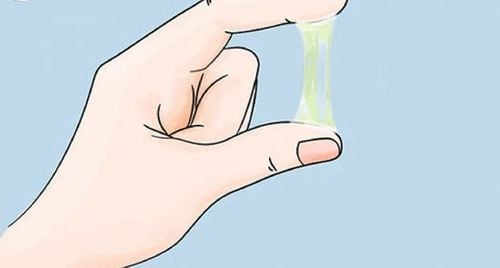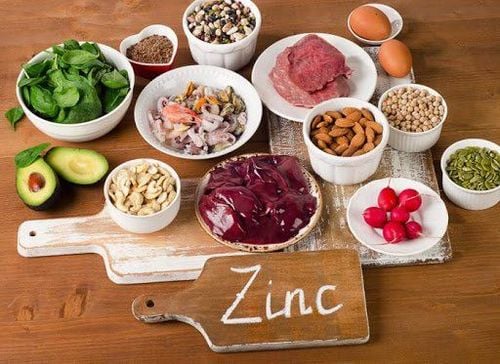“Why does the child refuse to chew and only swallow?" and "What should be done if the child refuses to chew food and only swallows?" are common concerns for many parents. Let’s take a look at the following article to better understand the reasons why a child refuses to chew and only swallows, as well as effective solutions to help the child change this habit.
1. Why does the child refuse to chew and only swallow?
Chewing food is a complex process that infants begin to learn gradually from around 6 months of age. It involves a complex series of movements of the jaw and tongue. Babies typically develop chewing skills in stages. Initially, they use the tongue and the roof of the mouth to mash food, then practice moving the food from side to side with the tongue, using the gums to grind it.
Like any other new skill, chewing depends on the experiences and abilities the child has acquired in the previous months.
The process of learning to chew typically starts between 6 to 9 months. This period is a critical opportunity to introduce textured foods (pureed foods, thickened foods).
Here are some common reasons why chewing may become an issue for toddlers:
• Late introduction of complementary feeding: A child’s inability to chew may be due to late complementary feeding (after 6–8 months). In this case, the optimal development of motor skills such as chewing may be delayed. Your baby may have difficulty accepting a new solid or semi-solid food texture, preferring their familiar milk.
• Late introduction of solid foods: A baby who has not been introduced to solid foods (such as porridge) by 8–10 months (the time when the baby typically starts sitting independently) may struggle with chewing solid food later on (around 14–15 months).
• Lack of interest in food: Another reason why toddlers may refuse to chew could simply be that they don’t like the food. This may be due to a lack of variety in taste, texture, or flavor. If a child is repeatedly fed the same food over several meals, they may become bored and refuse to chew.
• Toddlers may also refuse to chew if they are pressured to eat by parents who scold them or force them to finish their portions.
2. The harms of a child refusing to chew and only swallowing
Children who eat without chewing and only swallow may be the result of a prolonged period of consuming liquid and pureed foods (such as milk, pureed porridge, or finely strained rice porridge), which leads to passive eating behavior.
If this condition persists and the child struggles to transition to eating solid foods, particularly by the age of 5 when they still don't chew, it may lead to a loss of appetite and slow weight gain. Swallowing food without chewing, especially rice, can make digestion more difficult and negatively impact gastrointestinal function. Adding broth or soup to make rice easier to swallow only reinforces the habit of not chewing and dilutes gastric juices, further impairing digestion.

3. What should be done if the child refuses to chew?
Here are some effective solutions for a child who refuses to chew and only swallows:
• Introduce solid foods gradually
Introduce solid foods to your child slowly. You can use a baby food processor to create very soft, smooth textures that can be mixed with more finely pureed foods. Start by giving your child familiar pureed foods, then gradually mix small spoonfuls of textured food with the pureed food. Repeat this until the end of the meal.
Gradually, you can offer your child a few spoonfuls of textured food, followed by a few spoonfuls of pureed food. Once the child gets used to the new texture, they will be able to eat mostly textured foods. After that, introduce new foods once the child has had enough of a familiar food or texture, especially when they’re not too hungry.
Take a gradual approach when increasing the texture and challenges for the child. Let the child take control. If the child struggles with the quantity or size of the solid food, revert to easier foods they have already mastered.
Once the child cooperates well with the foods you’ve prepared, start cutting food into larger pieces or include a variety of sizes in the meal. You can gradually introduce solid food by offering one or two pieces at a time. Serve a small amount of food on the child's plate. You can offer finger foods like fruit slices, sticks, or anything the child is familiar with to encourage chewing.
• Involve the child in family meal
Let your child eat with the family. You can have them sit comfortably at the table with other family members during meal times. This will encourage them to start chewing their food rather than just swallowing. Show the child that everyone else is chewing their food and not swallowing it whole.
• Learn through imitation
Children learn by observing others. Seeing other children eating solid food can motivate them to chew. Sometimes, you can invite neighbors, friends, or cousins of the same age to encourage your child to eat along with them.
• Create a proper mealtime environment
Maintain a proper gap between meals to ensure the child is hungry, at least 3-4 hours between meals. Set fixed times for meals. Your child should finish main meals within 20-25 minutes, and snacks should be completed within 10-15 minutes. If your child takes longer than this, be firm about ending the meal. Over time, your child will start finishing meals on time.

4. What should be done when a child gets bored of eating the same food?
Your child may lose interest or become bored with eating the same type of food. This can lead to them refusing to chew and swallowing food whole or keeping food in their mouth. In such cases, you can try the following strategies:
• Present the food in an appealing way (add colorful vegetables, cut or cook in fun shapes, etc.);
• Try preparing foods your child doesn’t like in different ways to make them more interesting;
• Change the texture of the food that your child dislikes;
• Offer light snacks, like boiled carrots, once a day, arranged attractively on a plate, and allow your child to eat at their own pace. Accept that they may make a mess;
• Eat the food your child likes with them, showing enthusiasm and praising the food. If your child still refuses the old food, avoid offering it for a few days, then try again by cooking it differently.
A child who eats without chewing and only swallows may be the result of consuming liquid and pureed foods for too long. If this continues, it can make it difficult for the child to adapt to eating rice and other solid foods, leading to a loss of appetite and delayed weight gain. Therefore, parents should implement the above solutions to help their child learn to chew.
Additionally, children should be supplemented with essential micronutrients, such as zinc, selenium, chromium, vitamins B1 and B6, ginger, and cherry extract (vitamin C),... to improve taste perception, strengthen immunity, and reduce common illnesses and digestive problems.
Improvement may take some time, so parents are advised to remain patient and consistent when supplementing their child’s diet, whether through food or functional foods. It’s especially important to choose natural, easily absorbed functional foods, and avoid giving multiple types simultaneously or frequently changing them.
To arrange an appointment, please call HOTLINE or make your reservation directly HERE. You may also download the MyVinmec app to schedule appointments faster and manage your reservations more conveniently.








